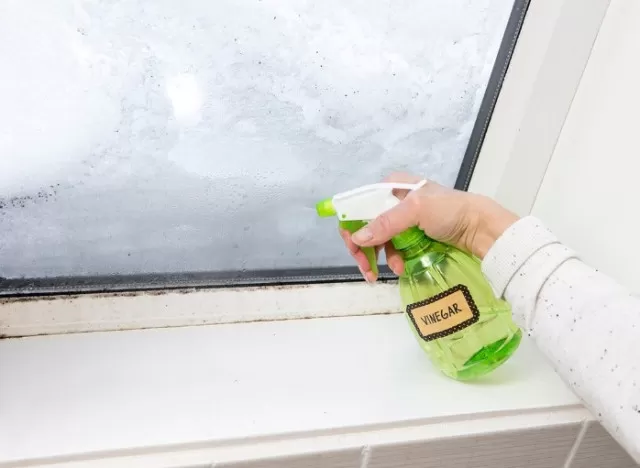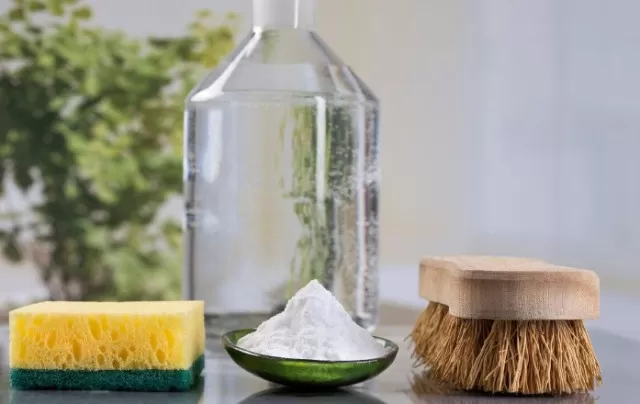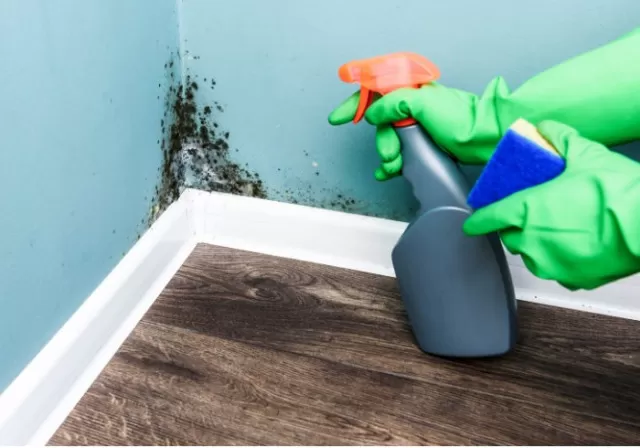Using Vinegar to Kill Mold. Mold, mildew, and fungal spores thrive in high humidity or due to plumbing leaks. Vinegar can effectively kill mold, but it takes about an hour to work. One of the advantages of vinegar is that it is inexpensive and less toxic to the environment and humans. However, individuals with asthma or allergies may be sensitive to mold and mildew.
Mold and mildew are both fungi that can colonize quickly and need to be removed. Mildew refers to specific types of fungus, including some types of mold. In general, the terms “mold” and “mildew” are used interchangeably to describe fungi that usually have flat growth.
According to the U.S. Department of Environmental Protection, if the mold patch is smaller than 10 square feet, you can try to remove it. To kill mold or mildew, vinegar must have an acetic acid level of 4.0%-4.2% or higher. Distilled White Vinegar sold in the condiment aisle contains around 5% acetic acid and 95% water. Cleaning vinegar has about 6% acetic acid.
Although vinegar can kill mold, it is a slow-acting solution. The discoloration and stains caused by mold may remain and require additional scrubbing with another household cleaner.
Important Factors to Consider Before Cleaning Mold or Mildew

Vinegar is a versatile and effective mold remover on many surfaces, but there are some surfaces on which it should not be used.
It’s essential to avoid Using Vinegar on the following surfaces:.
Stone surfaces: The acid in vinegar can dissolve calcium carbonate in some stone surfaces, leaving marks or damaging the surface.
Wood: Vinegar can harm the protective polyurethane finish on wooden flooring, causing damage.
Electronic screens: Vinegar can interfere with a screen’s anti-glare filter and touch responsiveness, so it should not be used on touch screens.
Certain metals: Vinegar should not be used to clean aluminum, copper, and stainless steel surfaces.
Porous surfaces: Vinegar is not an effective mold remover for porous or absorbent surfaces such as ceiling tiles or carpets.
While it can be used for clothing, it usually requires several washings and the sanitizing power of the sun to remove mold or mildew stains from fabric.
Step-by-Step Guide on How to Clean Mold or Mildew Using Vinegar

Distilled white or cleaning vinegar is a highly effective and non-toxic product for cleaning mold from various surfaces in your home, including refrigerator interiors and gaskets, kitchen appliances, and bathrooms.
Cleaning mold can be hazardous to your health due to potential allergic or toxic reactions.
Thus, it’s recommended to wear protective gear such as rubber gloves, an N-95 mask, and protective eye gear while cleaning moldy surfaces. Additionally, wear old clothes that can be washed separately to avoid spreading mold spores.
Before cleaning, it’s important to ventilate the area by opening doors and windows and turning on bathroom or kitchen exhaust fans.

To clean mold using vinegar, pour undiluted vinegar into a spray bottle and label it.
Spray the moldy surface and leave the vinegar on the surface for at least an hour before rinsing with a damp sponge. For porous surfaces, use a damp sponge to prevent oversaturation.
If mold has left grout or other finishes discolored, use oxygen-based bleach to remove the stains.
Mix one-half cup of powdered oxygen bleach with two quarts of warm water and apply the solution to the discolored areas with a sponge or nylon-bristled scrub brush. Allow the solution to work for at least 30 minutes before rinsing with clean water.
After cleaning, allow the surfaces to air-dry completely.
Additionally, vinegar can also be used to treat mold and mildew on clothes and accessories.
Take the items outside to brush away as much surface mold as possible, then use the hottest water recommended on the care label with one cup of vinegar in the washer load. For stains, create a solution of oxygen bleach and water and soak the clothes for at least eight hours.
Dry it with the sun (if possible). To clean leather clothes, shoes, and purses, wipe down the surface with distilled white vinegar outside, then use a good leather soap and dry with a soft cloth.
Allow the items to air dry completely and treat them with a leather conditioner.
Recommended Frequency for Cleaning Mold with Vinegar

It’s important to clean any small mold colonies immediately as they can quickly grow into larger colonies in just a few days.
Areas with high humidity or possible leaks should be checked and cleaned at least weekly to prevent mold growth. Regular cleaning of surfaces can also help eliminate the body soil, crumbs, and moisture that mold needs to thrive.
Signs that it’s Time to Call a Professional for Mold Removal

While smaller mold growth areas can often be removed with basic cleaning supplies, it’s important to follow safety guidelines.
However, if the mold colony covers over 10 square feet (roughly a three-foot by three-foot patch), it’s recommended to hire a professional mold removal company.
In addition, it’s advisable to hire a professional to test and identify the type of mold present.
You can seek advice on mold testing from your local public health department, which can also refer you to a reputable mold remediation company.
*The information is for reference only.